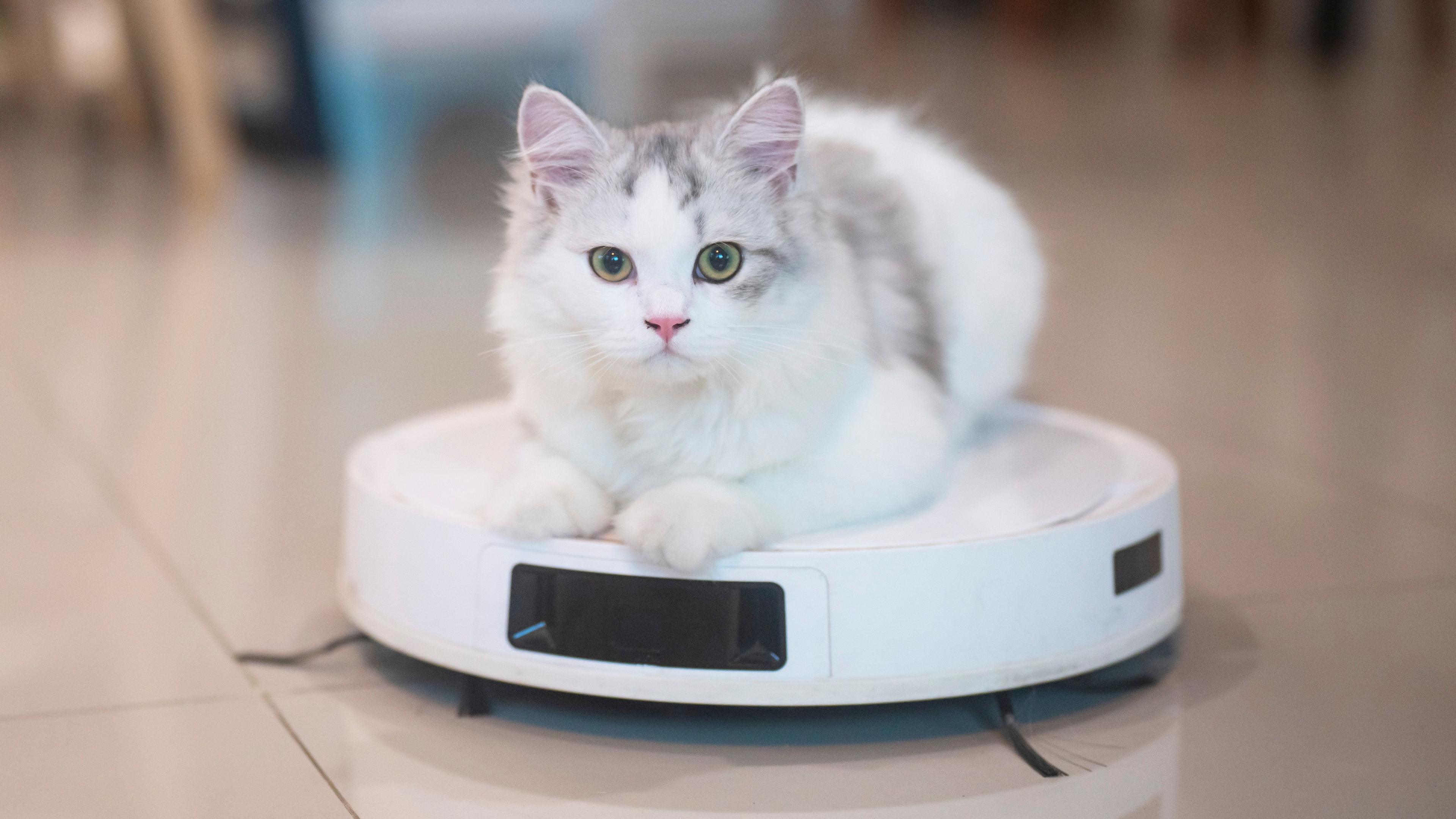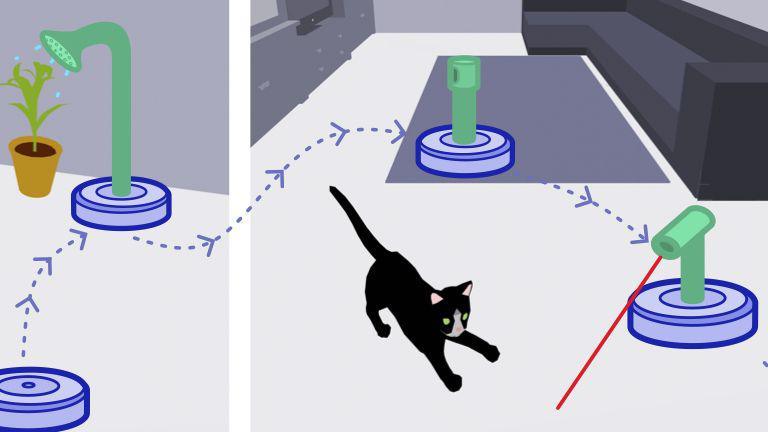Robot vacuums 'could water plants or play with cat'

Some cat owners would argue the robot vacuum already plays with their feline friends, but perhaps unintentionally
- Published
Scientists have reprogrammed a robot vacuum cleaner to help charge a phone and assist in a home workout because they think the machines are currently too "idle".
Researchers from the University of Bath say the increasingly popular domestic appliances are, on average, in use for less than two hours per day, but could be working considerably harder - with some modifications.
To prove their point, they retrained a Roomba device to carry out a range of other chores, and outlined many more possible tasks it could do such as playing with a cat and watering the plants.
Such robots "are perceived as limited, single-task devices but there is a strong argument that they are under-used for practical tasks", said Yoshiaki Shiokawa, the author of the study, external.

With attachments, the researchers believe a robot vacuum could perform many more tasks
The global household robots market size was valued at $10.3bn (£7.7bn) in 2023 and is anticipated, external to hit $24.5bn by 2028, meaning such devices are an increasingly common sight in people's homes.
Anyone who has watched a robot vacuum cleaner in action may argue these ideas are a little far-fetched, given that current machines sometimes struggle with the challenges presented by rugs and shoelaces while carrying out their core function.
However, scientists from the University of Bath and the University of Calgary in Canada, have set out to prove that cleaners - and similar devices, such as lawnmowers - could be reprogrammed and modified relatively easily.
Their study identified 100 functions the robots could possibly perform with simple adjustments.
The scientists then reprogrammed a Roomba robot vacuum cleaner to perform four of them:
A mobile phone charger attached to the vacuum that is programmed to follow the user
A robot with a projector attached that displayed a workout video on a wall or ceiling
A 'home monitor' with live video so a user could check on the oven
A screen showing 'do not disturb' on a robot that was programmed to go to a specific location, to help minimise possible disturbances
Other proposed tasks suggested by the scientists include a reprogrammed robot that carried the groceries from the car to the kitchen.
Mr Shiokawa, a PhD student in the department of computer science at Bath, said the project proved that "after making minimal adjustments, a Roomba can serve multiple roles around the home".
"For most of the day, they sit idle", he lamented.
He added that taking on some new tasks involved some upgrades the average vacuum owner probably would not have lying around their homes, such as a cart, a helmet and a robotic arm.
Nonetheless, he said people should be expecting more of their robots.
"We should be extending their utility beyond their primary tasks by programming them to physically navigate the home to perform a range of additional functions," he said.
The study's co-author Dr Adwait Sharma agreed, saying the device's "idle time" presented "unique opportunities" to meet the "growing need for adaptable robots and integrated systems that can seamlessly fit into our daily lives".